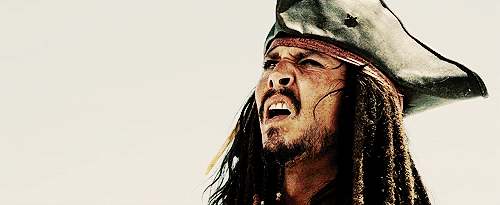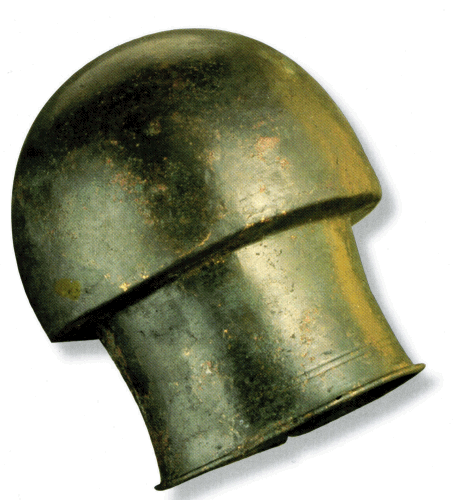The big names of the Roman medicine
The history of the Roman medicine is marked by important and famous characters. It is thanks to them that the medicine evolved and spread. These big names of the medicine left an indelible imprint, and today, we still remember them.
First of all, it is important to speak about Hippocrates, even if it is not a Roman doctor: indeed, foundations even of the medicine are owed to him, and the Roman medicine rests widely on its works and discoveries. Hippocrates is an illustrious Greek doctor, born in the island of Cos towards 460 b. J.C. and died to Larissa (city of Thessaly, in the center of Greece) towards 370 b. J.C .. He is a member of the family of Asclépiades, of priests doctors who assert coming down from Asclépios, Greek god of the medicine and worship him.

Having been the follower of the philosophers Democritus and Gorgias, Hippocrates practises the medicine to Cos and bases the famous school of medicine of the same name there. The medicine was before its works an assembly of religious beliefs. He made a scientific discipline. This is why we nickname him "the father of the medicine" For him the medicine is based on the observation and the reasoning. It is convinced that any disease is caused by an imbalance between four elements: fire, water, air and earth.
He is considered the author of an impressive quantity of medical works, but many of these texts were attributed to him wrongly. Hippocrates is also the author of the oath who bears his name.
---
Asclepiades of Bithynie or Prusa is Roman one doctor of origin Greek born in Prusa (current Turkey) in 124 b. J.C. and died in b av. J.C .. Having studied in Greece, Asclepiades bases a private school of medicine in Rome. It is the first one in the Roman Republic.
According to him, the best way to fight against the disease is to have a healthy lifestyle: he advocates baths, diets, sport, rather than medicine. He denies the theories of Hippocrates and moves forward that his method is the only one to make effect.
---
Aulus Cornelius Celsus is of Roman origin. It is not a doctor but a polygraph (it is an author writing on several sometimes very different subjects.). Contrary to most of the people writing about the medicine, Celse expresses himself and writes in Latin. Celsus is the author of the biggest treaty of medicine of the Antiquity. He resumes all the knowledges accumulated up to there regarding medicine. His work, de re medica, is very well organized. It is only a part of an immense work handling multiple aspects of the Roman company such as the agriculture or the army.
Celse shines with his logic, his common sense and especially with his objectivity: indeed, he never lets show through his preferences through his papers and just brings back the truth such as it is. We consider that Celse lived during the reign of the Emperor Augustus, but it is not absolutely sure.
---
Finally, Claudius Galenus is a Roman doctor of Greek origin been born in Asia Minor, in Pergamon (current Turkey), in 131, and disappeared in 201 in Rome or in Sicily. He is generally recognized as the biggest antique doctor after Hippocrates and as the biggest of Roman Empire. His father urges him to study of medicine while he is seventeen-year-old. Thus he undertakes in this way and, in 21 years, makes a gigantic journey off the Mediterranean Sea and receives the lessons of big doctors there. He becomes then the doctor of the gladiators to Pergamon. But at 33 years old, the ambitious doctor decides to settle down in Rome. He meets an enormous success there and becomes the doctor deprived of emperor Marcus Aurelius.

But in 167, it is urged to leave Rome. Thus he travels some time before returning in Rome to take care of sons of the emperor. He goes out in 201. Not endowed excessively for the forecast, Galien is very talented on the contrary for the diagnosis. Although studying the philosophy, the pharmacy (domain which he masters well) and the hygiene, the nerve of the medicine of Galien is the anatomy where it makes major discoveries on nerves or blood circulation in spite of some errors (Galien is convinced that it is the liver which is the center of the blood circulation).
He resumes the theory of four elements of his predecessor Hippocrates and is also inspired by Aristote. Contrary to Hippocrates, Galien does not show a modesty and is very full of his person, what many of his colleagues do not appreciate!
Some medical techniques known by Romans
We know now that Romain holds first-rate medical knowledge thanks to the results of big doctors (mixed all the same with errors), and that many specialities already exist at these people. But they are also capable of using sometimes complex techniques. Here are some examples.
The suction cup
An instrument frequently used by the Roman doctors is the suction cup. This tool allows to accelerate the cure of a sick person by appealing to the effect by revulsion, medical process which consists in handling a sick organ, in relieving congestion in him, by causing an influx of blood in a zone distant from the zone to be cured. Having produced a flame inside the suction cup, a partial space builds up itself: we can so inhale the skin and dilate the blood capillaries by placing the suction cup on the skin of the back, the breast … The Roman doctors so cure the pneumonia, the bronchitis, the pains of the back or the stomach …
We can also practise the heavy loss with an a little bit different suction cup (evacuation of a certain quantity of blood in a therapeutic purpose.) this process totally disappeared today.
The fractures
Romain knows and practise the use of pairs of forceps: they allow the doctor to put back in place the pieces of a broken bone by towing them between crowbars. He can be also used to extract pieces of bones of the body of a patient, or even ... to crush bones or head of a foetus.
The exploration of the body
The speculum suggests the practice of a technique rather close to the endoscopy in Rome. This instrument is rather impressive and called on to an ingenious mechanism which allows to rule out effectively walls. The speculum is a medical instrument which allows to explore more easily a cavity by ruling out its walls, what widens it and the endoscopy is a process using an endoscope ( medical optical instrument), what consists in exploring certain conduits of our body, for example nostrils or bronchi.
The anesthesia
The Roman doctor knows how to anesthetize his patient: for it, he uses substances as the juice of mandrake or the atropine. These products are extracted from the mandrake, from the belladone...
Remark
What amazes most when we look closely at the Roman medicine, it is the knowledge which detain the doctors in materials of hygiene: even if they do not know the existence of germs, they clean their instruments after every use, in some boiled water.
To be continued for the part 3









